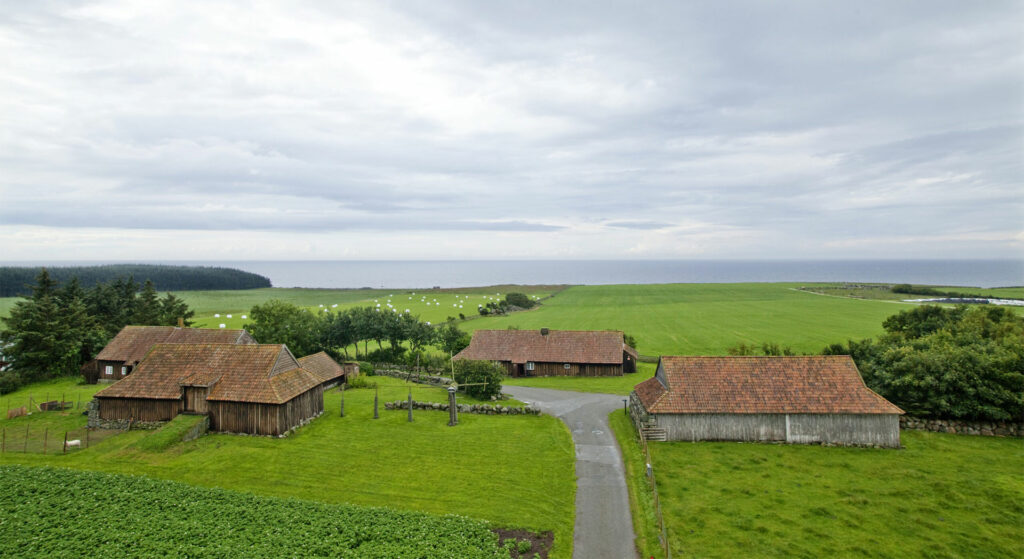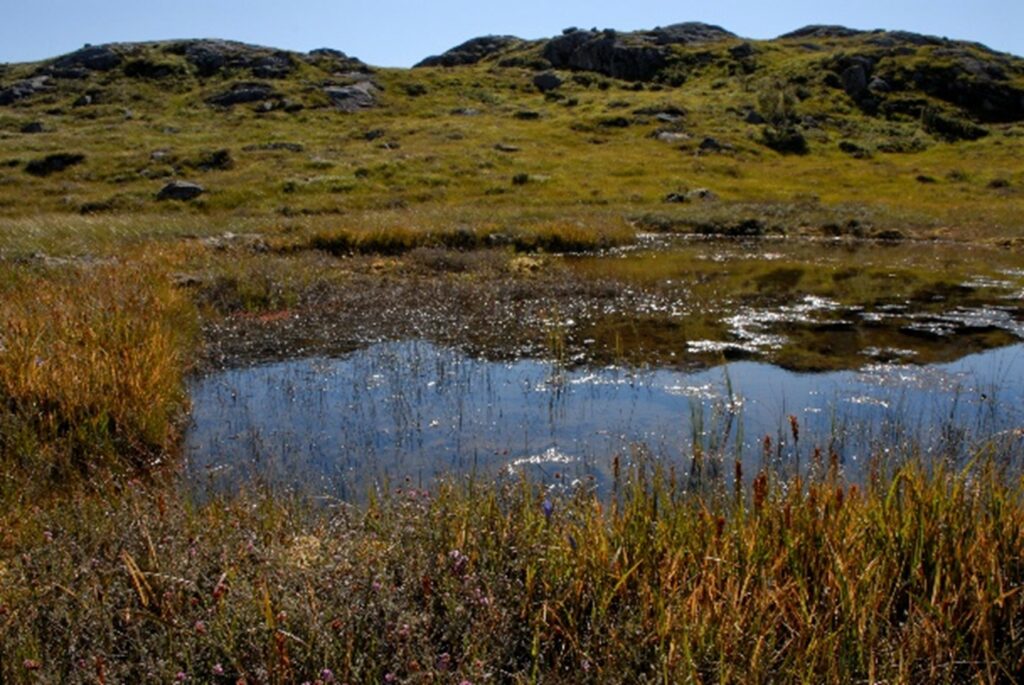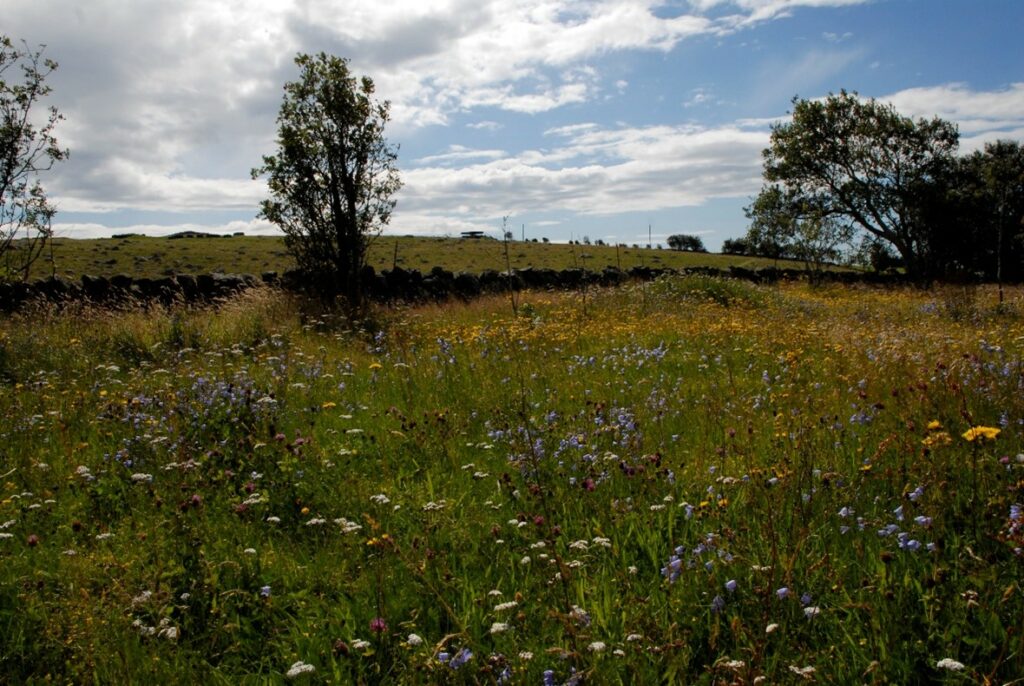Jæren is cultivated and large parts of the agricultural landscape is green. The grass provides nutritious feed for sheep and cattle. The photo below shows Grødaland in 2010 and illustrates the situation. A small selection of plants make up the majority of the cultural landscape. Only on the fringes where large modern farming equipment can’t reach is there disorder. Here, bushes and shrubs grow, which could grow into larger trees.

It was not always like this. When the houses at Grødaland were built, from early 1700s til early 1800s, the cultural landscape of Jæren was more diverse. There were natural meadows with a rich variation of flowers, herbs and grasses, fields, coastal moorlands, bogs and ponds. The photos below illustrate what this could have looked like.



In the 1800s, there were major changes in farming practices. Old livestock breeds were replaced by new ones, the same was true for crops. Farming methods and fertilisation also changed.
In the 1860s, farmers were encouraged to replace the indigenous meadows with mixes of clover, timothy and perennial rye-grass. The new meadows were called ‘artificial’ or agricultural hay meadows, the old were called natural meadows. Natural meadows were uniquely adapted to each location. Some of them provided excellent hay, others did not. The artificial meadows were grown from standardised seed mixtures, from plants especially suited to be turned into nutritious animal fodder. At the start of the 20th century, many natural meadows had been replaced by artificial hay meadows. At the same time, bogs were drained in order to cultivate the land. Coastal moorlands were fertilised and ploughed, and conditions were made ready for the grass to thrive.
Step by step, Jæren became a green and productive cultural landscape, dominated by species of grass. At the same time, the original rich biological diversity was lost.